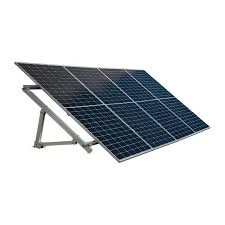Enhancing Efficiency in Solar Panel Energy Conversion Technologies for Sustainable Power Generation
Solar Panel Energy Conversion Efficiency An Overview
Solar panel energy conversion efficiency is a crucial factor in determining the effectiveness of solar energy systems in harnessing sunlight to generate electricity. As global energy demands rise and concerns about climate change intensify, the quest for more efficient solar technologies has become paramount. This article delves into the factors that influence solar panel efficiency, the advancements in technology, and the implications for the future of renewable energy.
Understanding Solar Panel Efficiency
Solar panel efficiency refers to the percentage of sunlight that can be converted into usable electricity by a solar panel. This efficiency is influenced by various factors, including the type of solar cells used, environmental conditions, and the design of the solar panel itself. Typically, solar panels convert around 15% to 22% of sunlight into electricity, although some advanced models can reach efficiencies exceeding 25%.
Types of Solar Cells
The efficiency of solar panels is largely determined by the type of solar cells employed. The most common types are monocrystalline, polycrystalline, and thin-film solar cells
1. Monocrystalline Solar Cells Known for their high efficiency and long lifespan, monocrystalline panels are made from a single crystal structure. They typically achieve efficiencies between 18% to 22% or more, making them a popular choice for both residential and commercial applications.
2. Polycrystalline Solar Cells These are made from multiple crystal structures and are generally less expensive to produce. However, their efficiency usually ranges between 15% to 20%. While they may be less efficient than monocrystalline panels, they still offer a viable and cost-effective option for many users.
solar panel energy conversion efficiency

3. Thin-Film Solar Cells Thin-film technology involves layering thin films of photovoltaic materials on a substrate. Although thin-film panels are lighter and more flexible, their efficiency tends to be lower — often between 10% to 12%. However, their cost-effectiveness and versatility make them suitable for specific applications, such as building-integrated photovoltaics.
Advancements in Solar Technology
Recent advancements in solar technology have led to significant improvements in energy conversion efficiency. For instance, bifacial solar panels, which can capture sunlight on both sides, have gained popularity for their ability to increase overall energy yield. Innovations like perovskite solar cells have also emerged, showing promise with efficiencies exceeding 25% in laboratory settings.
Moreover, the integration of artificial intelligence and machine learning in solar farm management helps optimize performance by predicting weather conditions and adjusting the panel orientation accordingly. Research into multi-junction solar cells, which layer different materials to capture a broader spectrum of sunlight, is also a hot topic, with efficiencies breaking the 40% mark in experimental setups.
Implications for the Future
As the world pushes towards a sustainable energy future, improving solar panel energy conversion efficiency is essential. Higher efficiency translates to more electricity generated per square meter, making solar installations more effective and reducing land use for solar farms. Enhanced efficiency also contributes to lower costs in the long run, as fewer panels are needed to produce the same amount of energy.
In conclusion, solar panel energy conversion efficiency is a dynamic field that embodies the intersection of technology, economics, and environmental stewardship. With ongoing research and development, the potential for more efficient and cost-effective solar energy systems is vast. As these advancements continue to unfold, solar energy stands poised to play an increasingly central role in meeting the world's energy needs sustainably.
-
Understanding the Advantages of Solar String Inverters for Your Energy SystemNewsApr.29,2025
-
Choosing the Right PV Inverter: A Comprehensive GuideNewsApr.29,2025
-
The Future of Solar Power: Exploring Bifacial Solar PanelsNewsApr.29,2025
-
The Complete Guide to Solar Panels: Efficiency, Cost, And InstallationNewsApr.29,2025
-
The Best Options for Efficiency and Cost-EffectivenessNewsApr.29,2025
-
Harnessing the Power of Off-Grid Solar Inverters for Energy IndependenceNewsApr.29,2025







